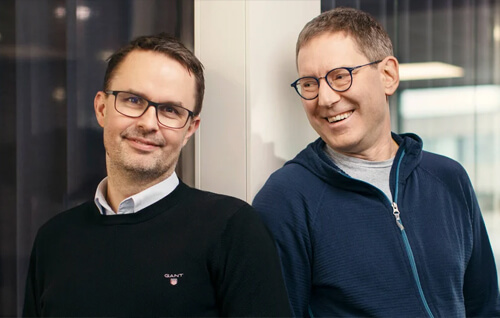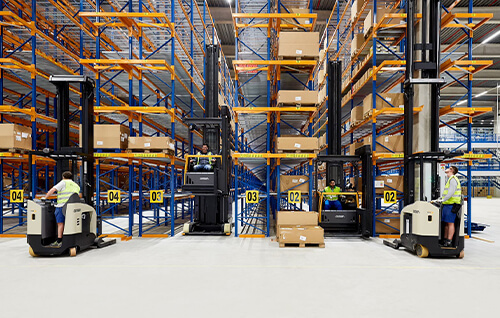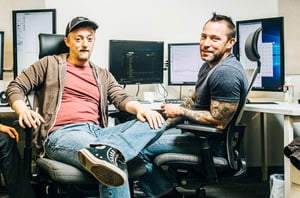
Make Your CET Extension Sing with the Right Development Partner
This is a guest blog by Configura development partner, Adam Greene of Platinum Edge Solutions, featuring five tips to help you secure the right development partner for your Extension project.
A developer's perspective
Configura’s flagship solution, CET, is a software that features Extensions which are essentially intelligent repositories of manufacturer products and specifications for use by designers, 3PLs, engineers and other people who design, specify and sell spaces.
To provide access to Extension creation at scale, Configura relies on development partners—third party companies that work directly with manufacturers to develop an Extension for use in CET.
Anyone in the world of designing or space planning will have a long list of tips, tricks and insider industry information they can share. But the one thing everyone knows but never talks about is the fact that designing is hard!
No matter how many years of experience you have, there are always going to be struggles, setbacks and roadblocks. This job is tough work. Removing as many obstacles as possible is key to making sure everyone is satisfied and successful—from developers to your end-users, installers and eventually your customers.
CET software exists to remove or simplify large parts of the more difficult and time-consuming design tasks. But if a manufacturer’s Extension isn’t made to work the way a CET user needs it to, it’s just adding more pain points to their day.

What’s the big deal?
If your company is new to CET software or considering investing resources into creating an Extension, there are several behind the scenes things to consider.
First, an Extension requires sound computing and coding. Development work is hard work and specialized knowledge is necessary to take your physical products and turn them into smart digital symbols that can stretch, rotate, snap or connect, calculate distances or pricing and more. Someone with little or no development experience could spend entire days troubleshooting errors and looking for solutions. That isn’t ideal in any scenario.
Second, a CET Extension should be the solution that saves time, offers easy access to a BOM, has live-design capabilities and more. When you take the time to find the right development partner for your Extension project, you can better create and maintain an error-free solution users will love.
And lastly, during or prior to the building of an Extension, manufacturers can select people from their teams to go through CET Developer training. In time, your team can take over the maintenance side of your Extension. But until your people are properly trained, you're probably better off letting the experts step in to support an Extension development project.
Five Tips for Finding the Right Development Partner
Of course, it’s easy for me to say, “find a great development partner and the rest is simple!” But in all honesty, there are numerous options for your Extension, and I acknowledge that every development partner has different areas of expertise.
So, how do you find the right fit? While my list is certainly not comprehensive, Configura, along with Platinum Edge Solutions, worked together to put together several tips that will help you find the right development partner to launch your CET Extension.
Does your potential development partner:
1. Understand your target user community?
This might sound strange because of course you know who your target users are, right? Developers are not users in the same way designers are. We understand the software in a way designers do not. However, while developers can work a bit of magic inside CET, the most important part about developing an Extension is ensuring the software is intuitive and simple for your users.
When you consider your users (e.g., interior designers, mechanical engineers, dealers, etc.) there are several questions you should ask a potential development partner. Things like: what is your philosophy on UX/UI design? How often do you communicate with power users? Do you bring in others to help design solutions?
Ensuring the people developing your software will put the needs of your users first is instrumental to a successful Extension. If you don’t get that sort of response in your vetting conversation, it’s time to pivot and look for a different partner.
2. Have a clear understanding of PGC and Catalogue Extensions for CET?
Configura defines PGC as parametric graphical configuration. In short, it's the brains behind smart symbols, built-in calculations and everything else that makes the software extraordinary.
Different types of Extensions require a different set of skills—and your project management and testing process will likely be different as a result. An Ultimate Extension will take more time and require more feedback from your team but it will also offer you far more versatility and ability to expand. Catalogue Extensions, which are driven by data and different data formats, offer easy user accessibility but less customizable capabilities.
3. Put an emphasis on quality assurance?
It should come as no surprise that quality assurance (QA) will make or break your project. If your development partner does not have a QA department checking the work before it gets to you, all the burden and hours of review time fall on your shoulders.
A manufacturer will always be the product expert and should approve all work before it goes live. But your development partner should have QA on staff who knows Configura's ecosystem and CET software—and especially how CET Extensions function.
Some development partners provide multiple layers of QA before sending your work to review, which results in even better quality and ultimately, a faster project turnaround. In the end, you want your team to focus on those ever-important details knowing that the bulk of the work is good to go based on QA processes completed by your development partner.
4. Offer a clear and direct project process?
Similar to QA, finding a development partner with a strong project process can be the difference between nailing a launch deadline or rocketing passed it while simultaneously blowing your budget.
While this type of project often means you work in tandem with a Project Manager (PM), it doesn’t have to. Some companies in Configura’s ecosystem have crafted workflows that replace the need for a PM. In these cases, there are less people involved in the project and therefore, a leaner development cycle. But processes do need to be in place and clearly communicated; otherwise, you can count on your project being derailed and delayed.
A development partner's process for doing work should fit your team and company needs—this alone will offer you the greatest possible transparency from project start to finish.
5. Have existing Configura connections or related project experience?
At the end of the day, CET software is a Configura product, and we are all part of Configura’s ecosystem.
Experts at Configura are always available to help backstop developers and users, as well as help make sure your Extension is living up to global CET standards.
The right development partner can be a helpful bridge between your project and Configura. From getting answers via the right departments or people, to getting advice on making an Extension better, a development partner with an open dialogue with Configura is an invaluable asset.
Extension development is not just a collaboration between you and your development partner, it's a relationship with Configura as well.
Your Extension will be something you use daily for years to come. The effort and focus given to it today will ensure the functionality and ease of use that you and your users need and want in the long-term.
If you take away one tip from this article, make it this: do your research before deciding on a development partner. Follow the tips above and you will find the right fit for your company's needs!
This blog was written with additional support from Kathryn Cook, Developer at Configura and Elizabeth Busch, Program Manager of Service & Development Partners at Configura.
Work with a development partner
Curious about the Extension process or how to get started vetting development partners? Configura currently works with several partners including CADNET, ENCODEC, KONVERGENT SOLUTIONS, NORRLAB, OST, PLATINUMEDGE SOLUTIONS, RIVERSTONE, RSC, SERVEX, TECHBOX COLLECTIVE, TOKYO BILLBOARD, UX & KARI and WORLD EMBLEM.
Subscribe to the Configura Blog to get notified whenever we post something new:


















